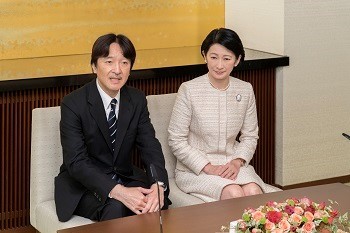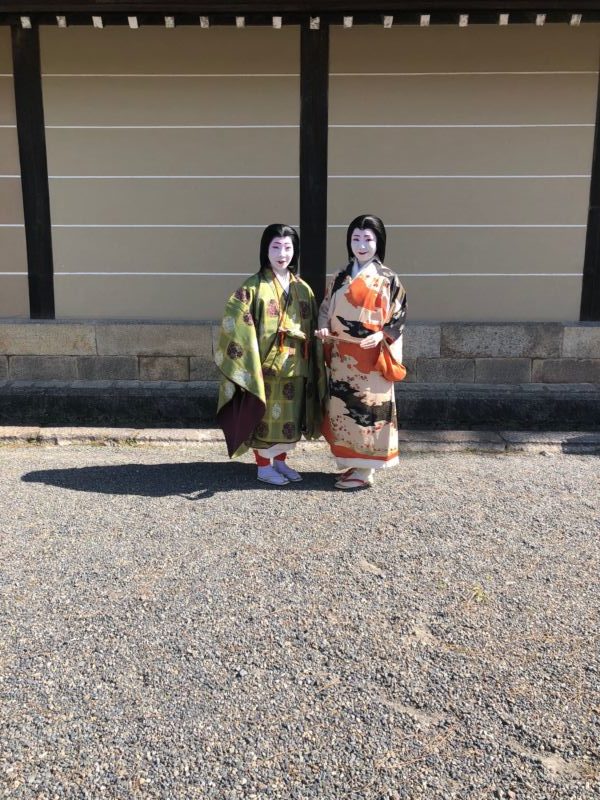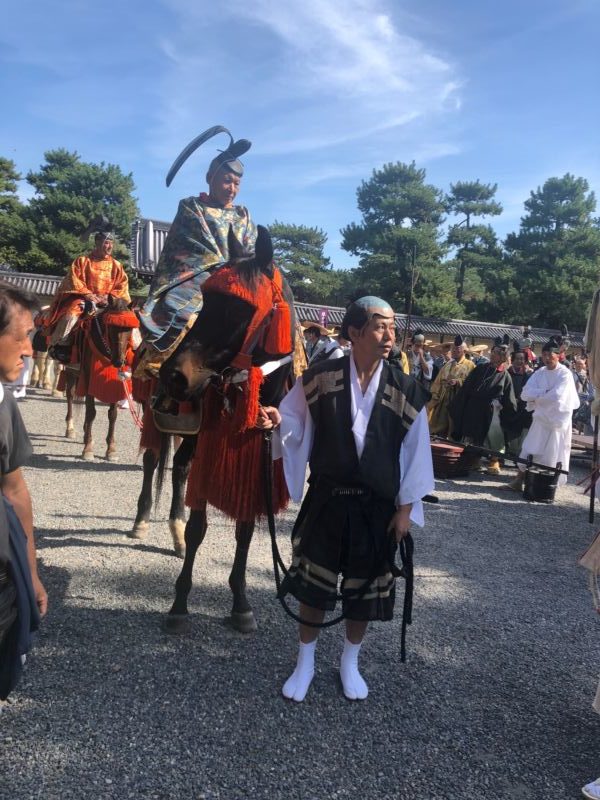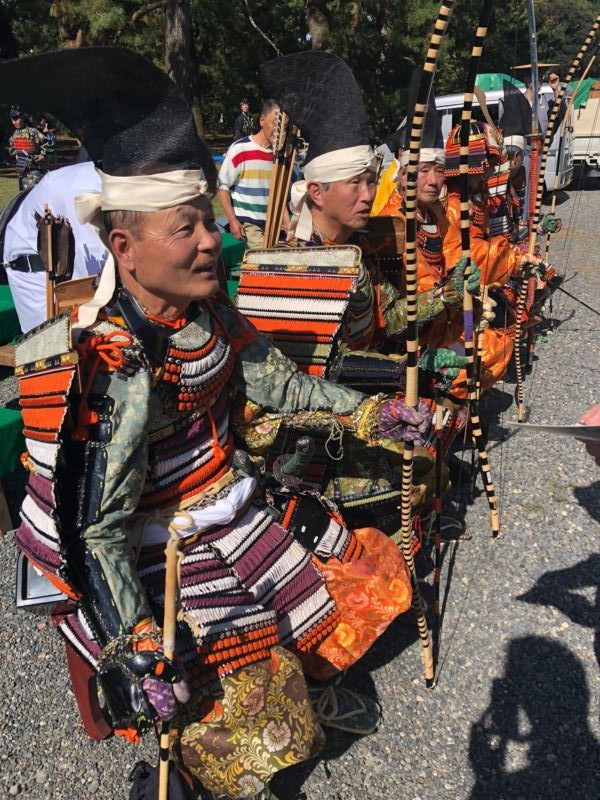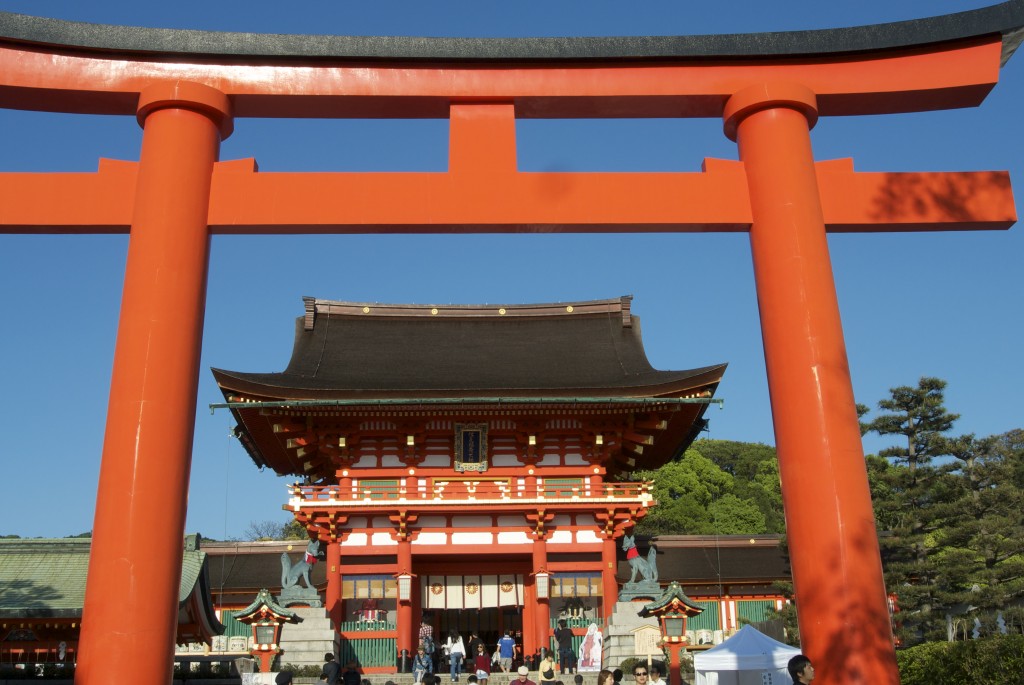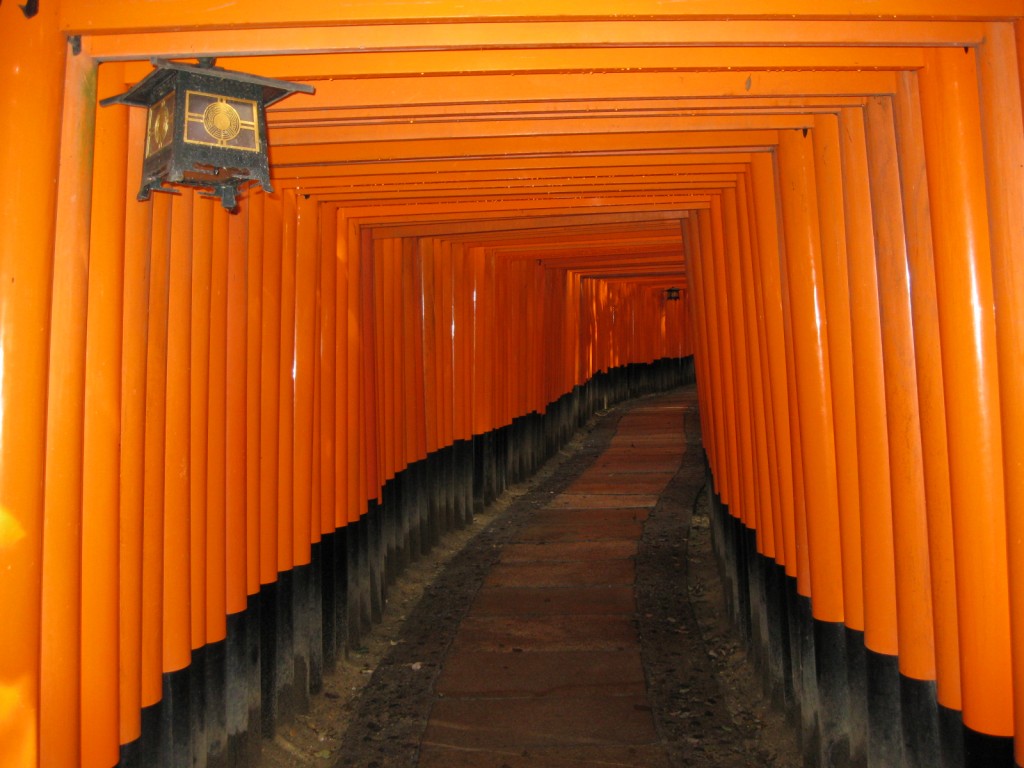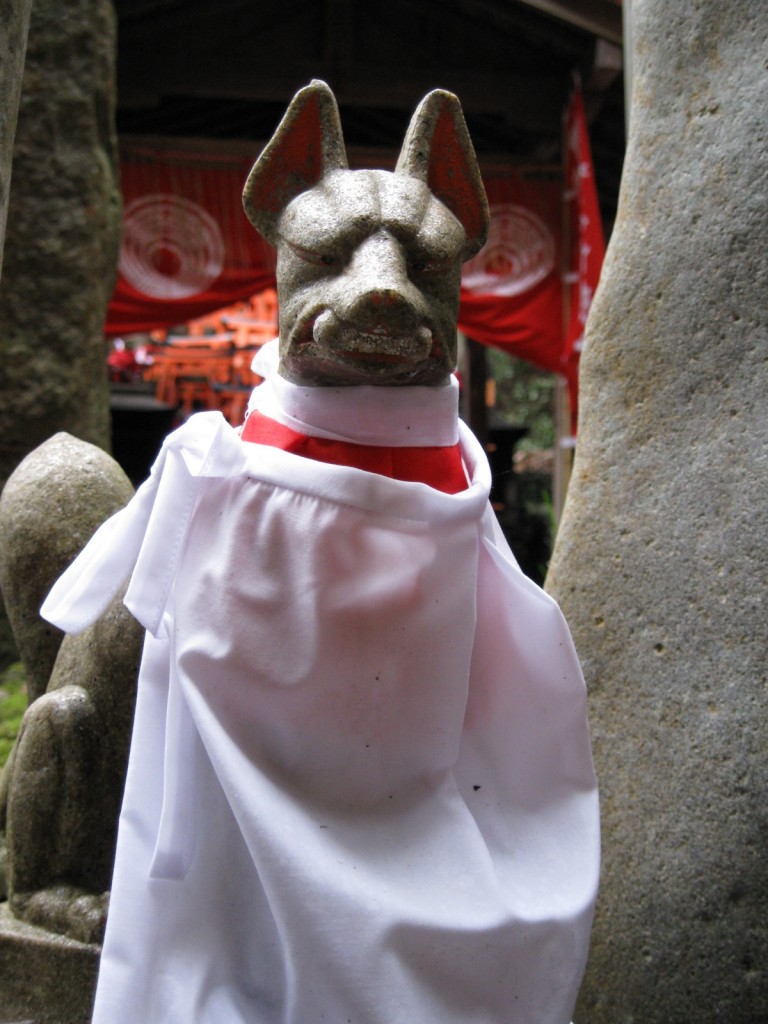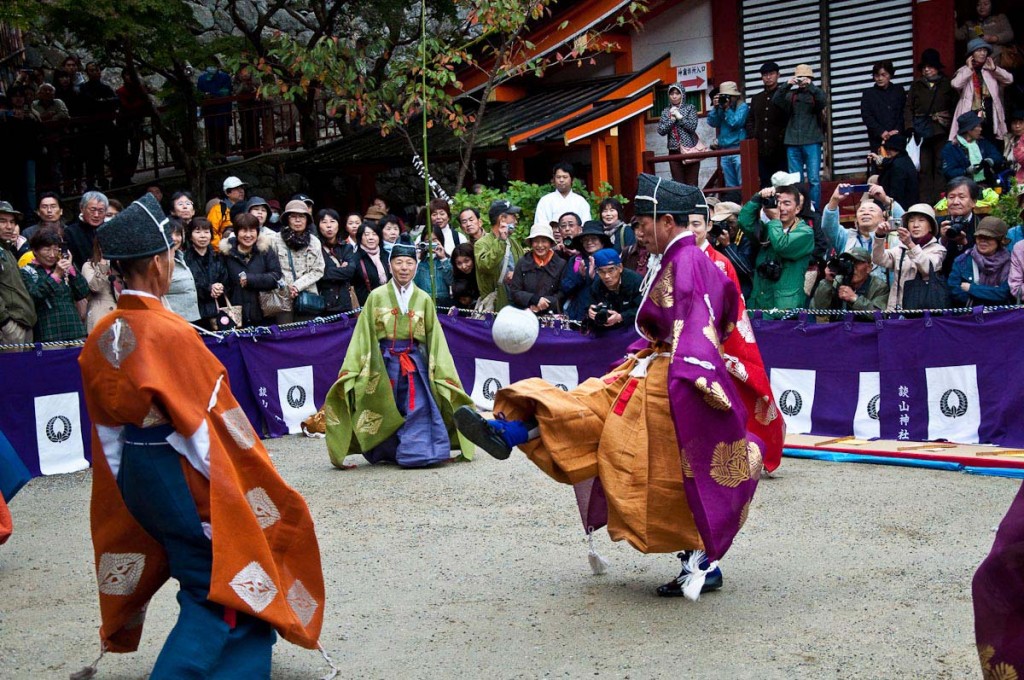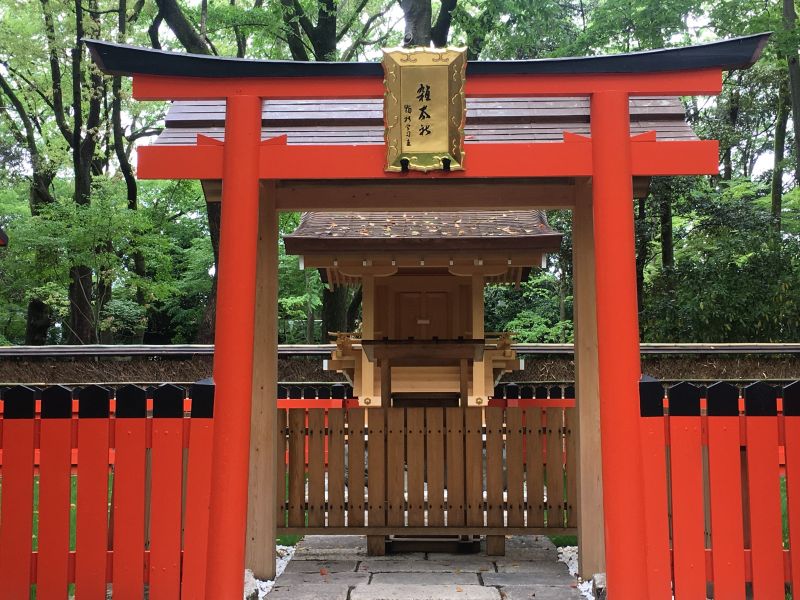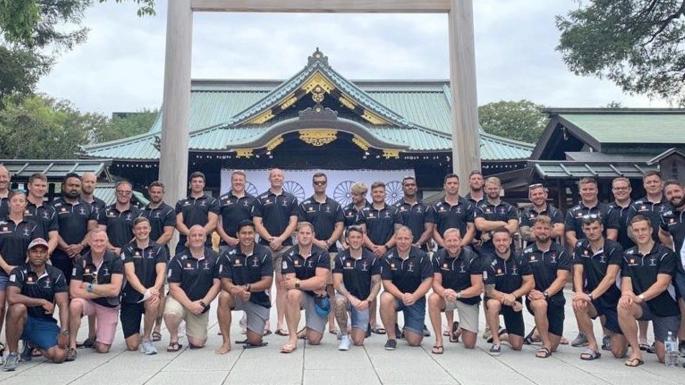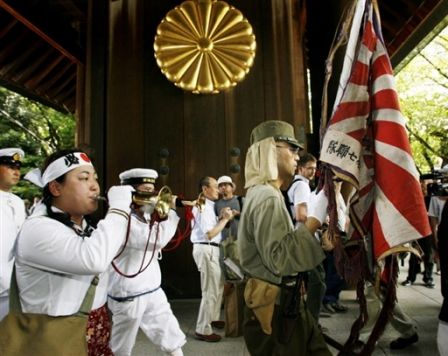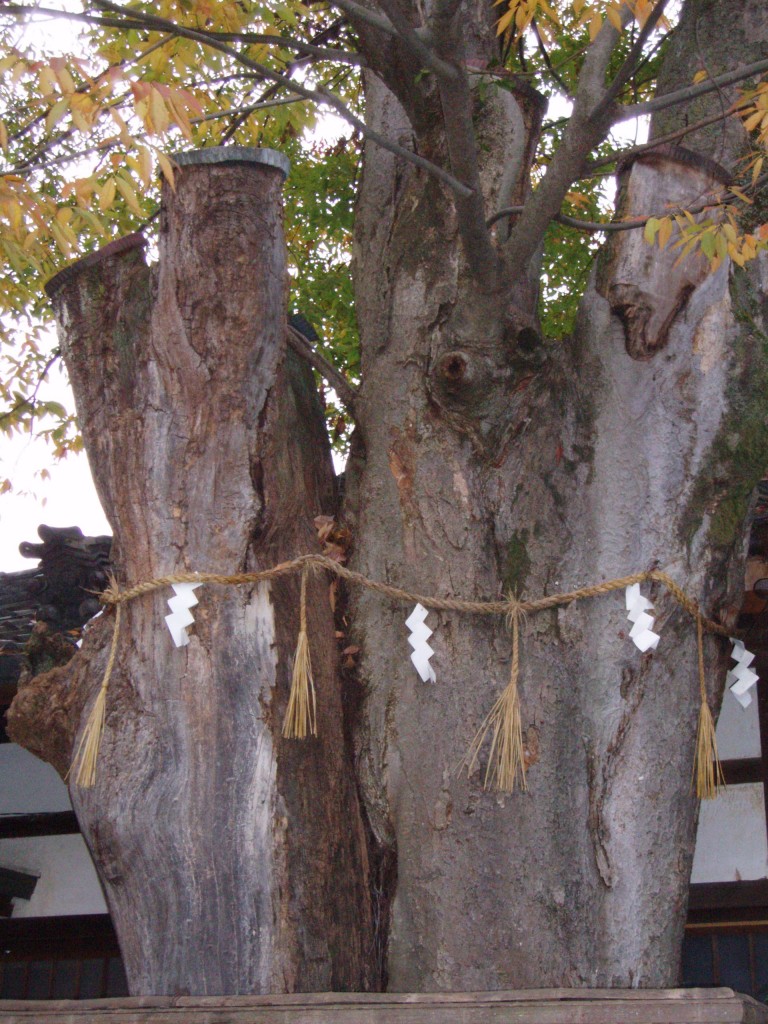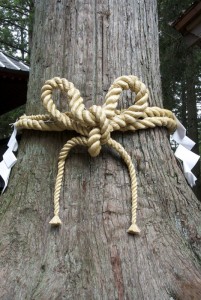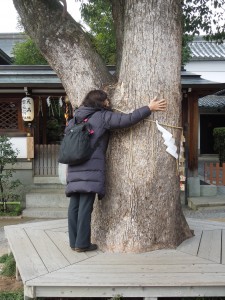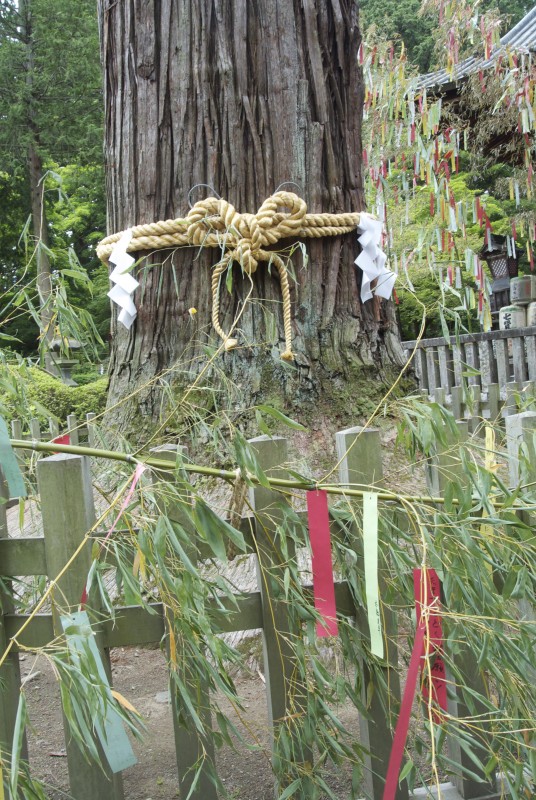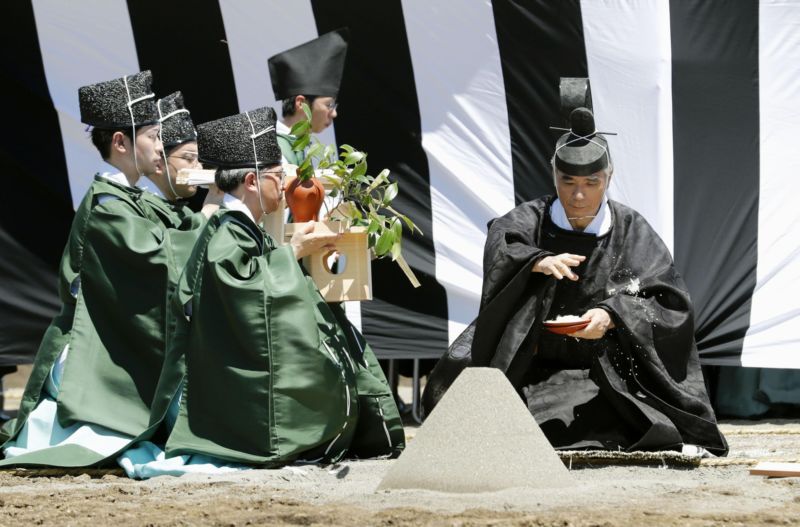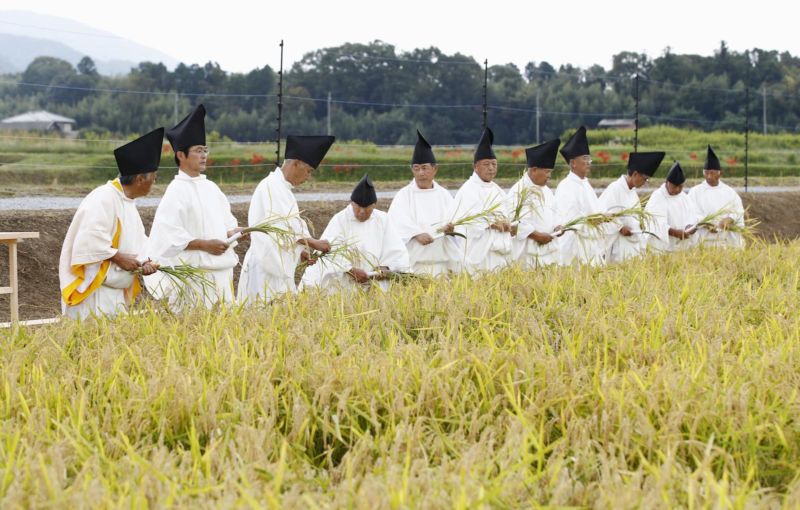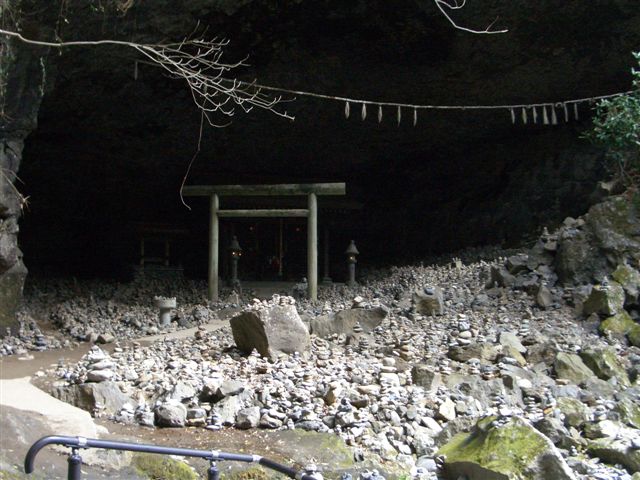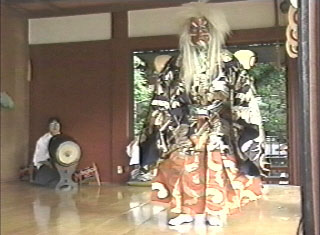Over the next month there will be two major events marking the enthronement of Emperor Naruhito. One is clearly state oriented, but the other is very much a Shinto rite. The Daijosai on Nov14 can be seen indeed as the ultimate Shinto rite, taking place in secret and bonding the new emperor with Amaterasu omikami and the ancestral line. Hirohito may have renounced his divinity at the end of World War Two, but the imperial line continues to assert descent from the Sun Goddess, who is definitely divine. So what does that make the present emperor? And how does that square with Japan’s Constitution mandating the separation of religion and state? Here’s what Japan Today has to say on the subject….
Q: Is it appropriate for the state to fund ceremonies related to the succession?
A: Some critics said that public funding of certain rituals violates the constitutional principle of the separation of religion and state, as many are related to Shinto in which the emperor is venerated as a descendant of a sun goddess. In relation to the enthronement ceremonies for Emperor Akihito in 1990, a number of lawsuits contesting the constitutionality of the rites were filed across Japan, but they were all dismissed. However, the Osaka High Court said in a 1995 ruling that doubts remain whether government financing of Shinto-linked rituals breaches the Constitution.
In an article for The Asia-Pacific Journal, Shinto scholar John Breen looks in greater detail at the constitutional question. It’s very much a topical issue, for under Shinzo Abe there has been evident a desire for greater incorporation of Shinto into state affairs, with help from a compliant legal system. Abe belongs to the nationalist Nippon Kaigi, an influential political group that makes little pretense of its wish to reintroduce aspects of State Shinto.
The piece that follows by John Breen is extracted from a long article entitled ‘Abdication, Succession and Japan’s Imperial Future: An Emperor’s Dilemma’. The original article, dated May 1, 2019, is annotated, referenced and contains the Japanese kanji for names, so please click here should you wish to see it.
On 22 October, the emperor and empress will ascend their respective thrones before an assembly of dignitaries, Japanese and foreign, in the sokui enthronement rite. They will then parade through the streets of Tokyo, before hosting a banquet in the evening. [The rites] are held as “acts in matters of state.” It is worth pointing out that, although they are broadly secular in nature, they are not entirely so. At the very least, the sword and the jewel that feature in all three rites are sacred objects, and treated as such. According to Japan’s seventh century state foundation myths, these objects, along with a sacred mirror, were handed by the Sun Goddess to her grandson before he descended to earth. These objects are testament, in other words, to the sacred nature of Japanese emperorship.
The climax of the enthronement sequence is indisputably sacred in character. This is the daijōsai or “rite of great feasting,” which will take place on the night of 14-15 November. A complex of wooden buildings, featuring two main pavilions (the Yukiden and Sukiden), will be erected on the palace grounds. Both pavilions are furnished with bed and shroud to welcome the Sun Goddess. Two different districts of Japan – the Yuki field to the west of Tokyo and the Suki field to the east – supply the rice for feasting. In each pavilion, the emperor will offer the Sun Goddess meals of rice, before partaking of it himself. He will emerge at dawn, transformed by his mystical communion with his ancestress.
This enthronement sequence is of great vintage. In some form or other, the rites can be traced back to the 7th Century. They have played a vital role in producing and reaffirming Japan’s emperor-centered order for over a millennium. The daijōsai, in particular, has undergone multiple interpretations over time, and its mise-en-scène has changed drastically, too. Only in modern times has it been it regarded as the most important of the three enthronement rites, and this is because it was interpreted now as the ultimate act of imperial piety. It served, by the same token, as dramatic proof that the emperor was indeed descended from the Sun Goddess. It was for this reason that the modern daijōsai as performed by the Meiji, Taishō and Shōwa emperors were staged as truly national events; they sought to engage the whole of Japan and, indeed, the empire with the imperial myth.
Emperor Akihito’s daijōsai, the first in the postwar era, took place on the night of 22-23 November 1990. It had the distinction of being the first ever to cause legal controversy. The controversy and its resolution deserve to be more widely known. Articles 20 and 89 of the Constitution provide for the separation of state and religion. And yet, the state funded the daijōsai, which is “religious” to the extent that it features the Sun Goddess. The government fended off accusations of unconstitutionality by citing the “object and effect” principle established in a landmark Supreme Court ruling in 1977. The essence of the ruling was that the state may engage with religion, so long as neither the “object” nor the “effect” of its engagement amounts to the promotion of any specific religion. The government’s position was that public funding of the daijōsai contravened neither criteria. Many citizens’ groups disagreed, and took legal action, but their suits all foundered on the “object and effect” principle.
Prince Akishino, younger brother of the emperor, and heir apparent, with his wife in 2018
Controversy surrounds the 2019 daijōsai, too. Citizens’ groups are poised once more to take legal action against the government, even though they stand little chance of success. This time, however, they appear to have the moral support of Prince Akishino no Miya Fumihito, the new emperor’s younger brother and next in line to the throne. At his birthday meeting with the press on 11 November 2018, the prince queried the wisdom of the government underwriting the daijōsai as it had in 1990. He confessed it left him feeling “uneasy.” The cause of his uneasiness was this: the government sets aside two funds for imperial family use. There is the “court fund” (kyūteihi), totaling some $83 million, which covers all of the emperor’s public activities – his “acts in matters of state.” There is also a much more modest “imperial family fund” (naiteihi) of some $2.7 million, which is for the private use of the emperor and his family.
Both funds are, of course, tax payers’ money, but the prince is uneasy at the government’s insistence on using the “court fund” to underwrite the “religious” daijōsai. This implies that the daijōsai is, after all, a public not private act. The prince’s radical idea, intended to preserve the constitutional separation of state and religion, was that the daijōsai be scaled back to a point where it might be covered entirely by the “imperial family fund.” The prince had raised this matter time and again with Imperial Household officials, but, he lamented, they had “refused to pay him heed.” He was, indeed, ignored by both the Imperial Household and the Abe administration. No one doubts that the prince was articulating views shared by his older brother and father.
In any case, the daijōsai rite remains essential to emperor-making in Japan. In its postwar manifestation, it merits attention as one further piece of evidence of the sacred encroaching into Japan’s public sphere. By “the sacred,” I refer specifically to ritual performances involving the Sun Goddess, and to the myth of the emperor’s descent from the Sun Goddess, which the rites serve to animate. The postwar Constitution sought to confine the sacred to the private sphere of the imperial court, and yet, in the seven decades since its promulgation – and especially during Abe Shinzō’s premiership – the sacred has become ever more public. Abe’s active association with the Ise Shrines is a case in point. In 2013, when the Ise Shrines underwent their vicennial rebuild, he played a key ritual role, escorting the Sun Goddess on her solemn progress through the night from old shrine to new.35 In 2016, he hosted the G7 summit in Ise, and took heads of the G7 states to the shrines as though they were a national site. In law, of course, they are a private religious juridical entity. In both 2017 and 2018, Abe participated in the niinamesai court rite, which also celebrates the Sun Goddess. The rite is held within the palace’s shrine complex annually on 23 November. It is in this broader context that the Abe administration will fund Emperor Naruhito’s daijōsai in November 2019.

